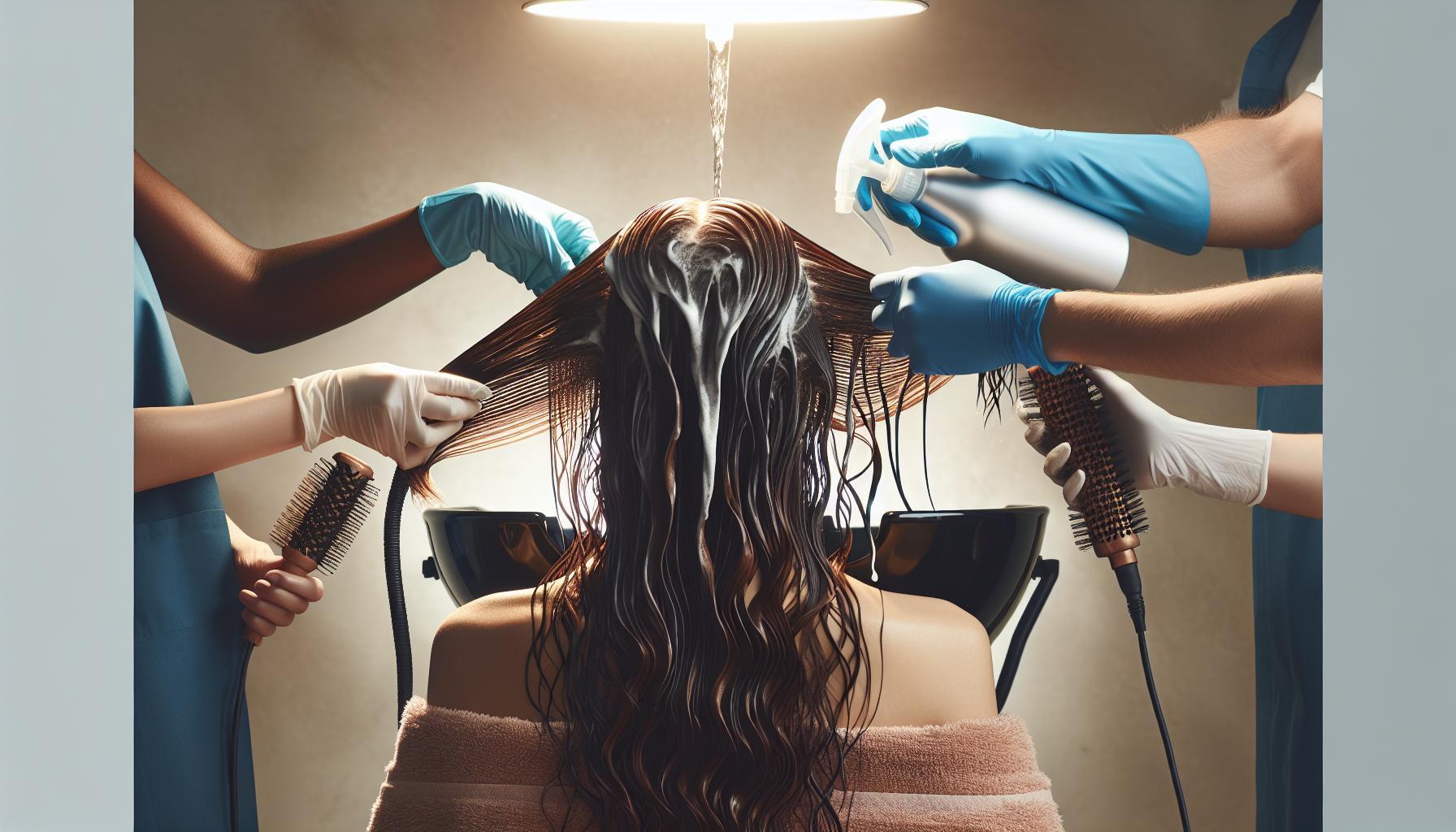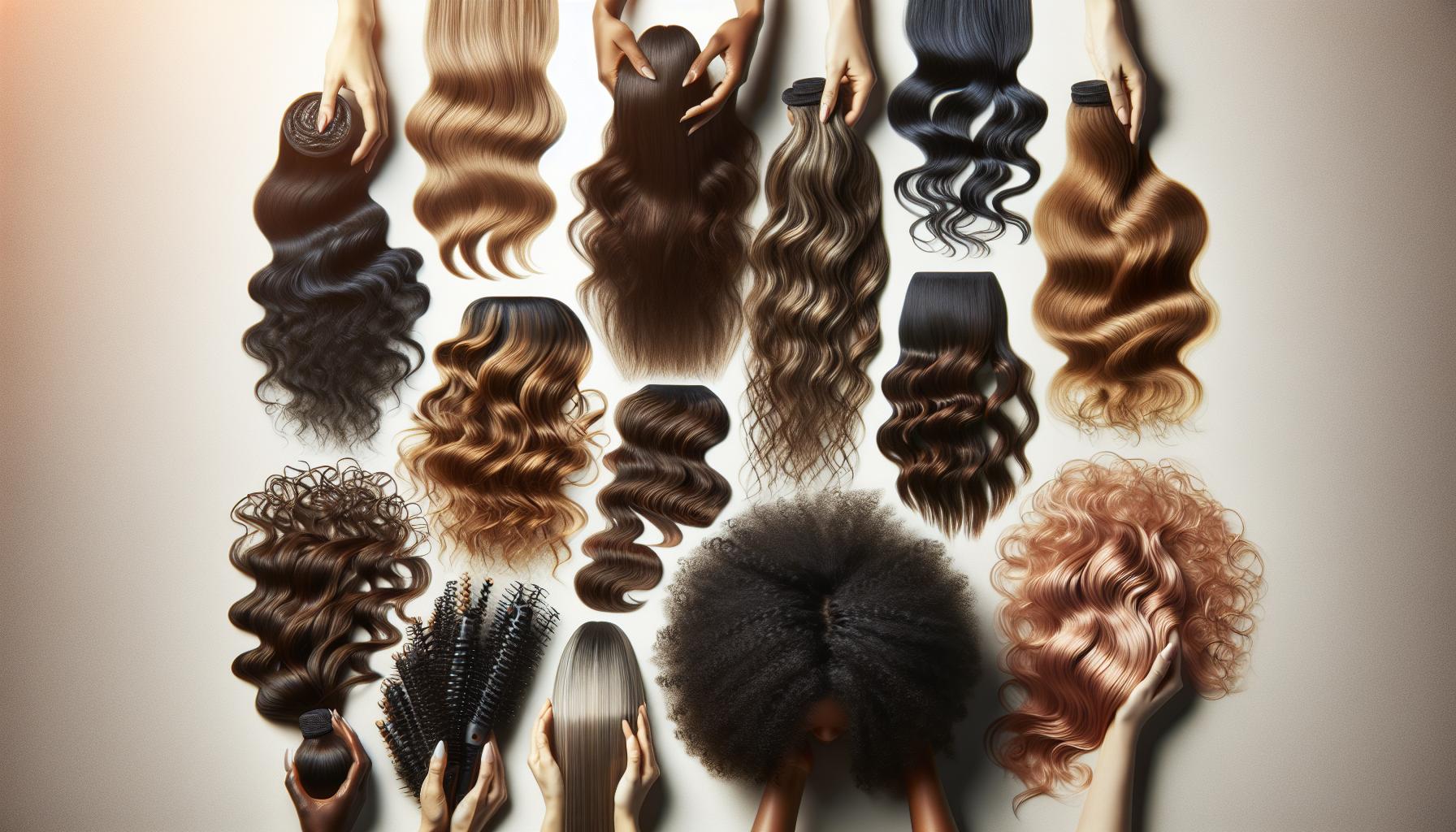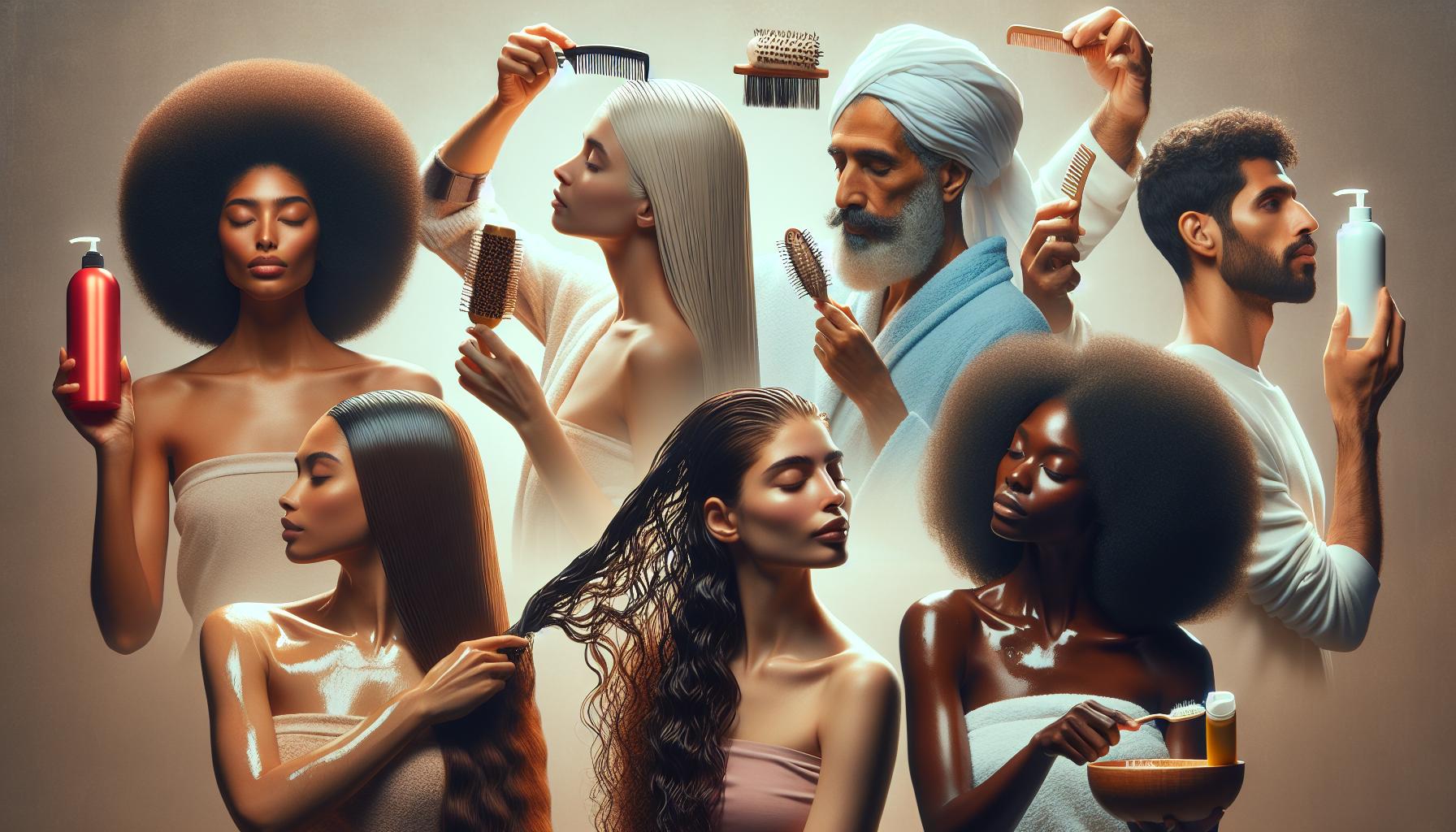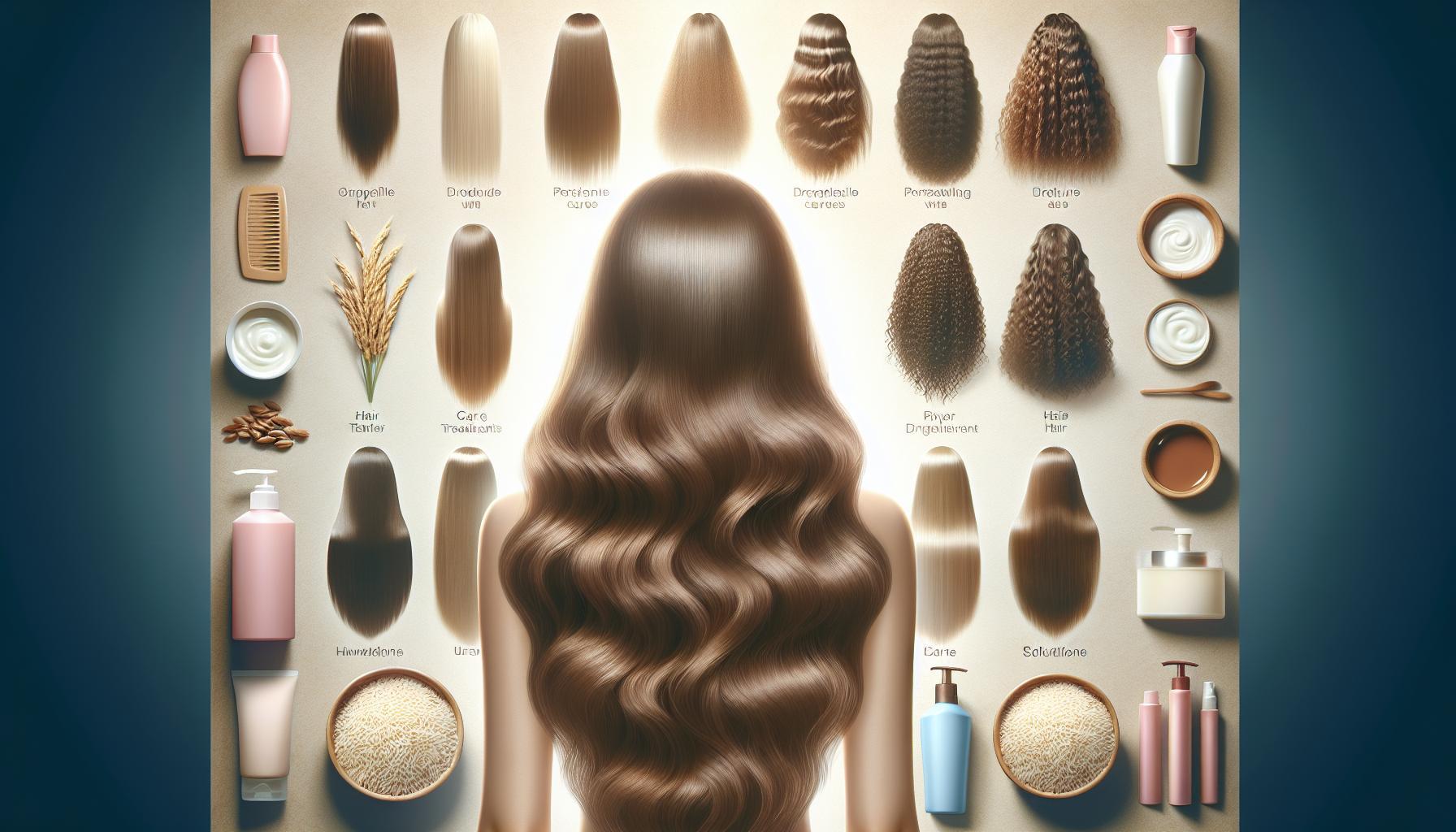Are your tresses looking tired,frizzy,or damaged? Deep conditioning is the secret to restoring life and moisture to neglected locks. This essential haircare step not only revives dull strands but also enhances manageability and shine, making it vital for anyone seeking healthy, vibrant hair. Discover how easy it is to achieve salon-worthy results at home!
Contents
- Understanding the Basics of Deep Conditioning: What It Really Does for Your Hair
- Identifying Your Hair Type: Tailoring Treatments for maximum benefit
- Choosing the Right Deep Conditioner: Ingredients to Look For
- DIY Deep Conditioning Treatments: Nature’s Best Ingredients for Your Hair
- The Ideal Application Technique: How to Deep Condition Effectively
- Maximizing Results: Tips for Keeping Your Deep Conditioner on Overnight
- Common Mistakes to Avoid: What Can Sabotage Your deep Conditioning efforts
- Maintaining Healthy Hair Post-Conditioning: Longer-Lasting Results and Care Tips
- Q&A
- What is deep conditioning and why is it important?
- How to deep condition your hair overnight?
- How often should I deep condition my hair?
- Can I deep condition my hair and then use regular conditioner?
- Why does my hair feel heavy after deep conditioning?
- What ingredients should I look for in deep conditioners?
- Can deep conditioning help with hair loss?
- Future Outlook
Understanding the Basics of Deep Conditioning: What It Really Does for Your Hair
Understanding the science behind deep conditioning is crucial for anyone seeking to rejuvenate their hair. Deep conditioners are intensive treatments designed to penetrate the hair shaft, providing essential moisture and nutrients. Unlike regular conditioners, which primarily hydrate the outer layer of the hair, deep conditioners work at a deeper level to tackle damage caused by factors like heat styling, chemical treatments, and environmental aggressors. This process helps in repairing and revitalizing dry and damaged locks,making them more resilient and manageable.
When you apply a deep conditioner, it’s important to focus on your specific hair type and needs. Products can vary substantially; some are enriched with proteins to strengthen hair, while others emphasize hydration through moisturizing oils and butters.Look for ingredients like coconut oil, shea butter, or keratin, which are known to nourish and protect hair from within. To maximize the benefits, consider applying the deep conditioner to towel-dried hair, ensuring better absorption.
Key Benefits of Deep Conditioning
- Moisture Restoration: Deep conditioning helps replenish lost moisture, making hair softer and smoother.
- Strength Enhancement: Many deep conditioners contain proteins that strengthen hair and prevent breakage.
- Improved Elasticity: Regular use boosts hair’s elasticity, reducing the likelihood of damage during styling.
- Frizz Control: Hydrated hair appears healthy and shiny, thus minimizing frizz and flyaways.
To achieve the best results when deep conditioning, a consistent routine is key. Depending on your hair’s condition, deep conditioning treatments should be performed weekly or bi-weekly.If your unsure of your hair’s needs, start with one treatment and adjust based on the results you observe. Always remember that deep conditioning is an investment in your hair’s health,and the benefits can be transformative,leading to smoother,more vibrant,and luxurious locks.
Identifying Your Hair Type: Tailoring Treatments for maximum benefit
Identifying your hair type is crucial for selecting the right treatments,especially when looking to enhance the effectiveness of deep conditioning. Different hair types—whether straight, wavy, curly, or coily—each have unique needs that can significantly impact how well they respond to various conditioning treatments. understanding your hair’s porosity,thickness,and overall health can guide you in tailoring your approach for optimal results.
Understanding Your Hair Type
Knowing your hair type is the first step in personalized hair care. Here are some key characteristics to consider:
- Straight Hair: This type frequently enough shows oil more quickly, meaning lighter products might potentially be more beneficial to avoid weighing it down.
- Wavy Hair: this type usually enjoys a blend of moisture and control. Look for products that define waves without causing frizz.
- Curly Hair: Curls crave moisture and definition.Rich deep conditioners that are heavy in oils can tame frizz and restore hydration.
- Coily Hair: Extremely prone to dryness, coily hair benefits from very heavy treatments that penetrate deeply and nourish from within.
Determining your hair’s porosity can further refine your treatment choices. Hair can be classified as low, medium, or high porosity:
| Porosity Type | Description | Recommended Products |
|---|---|---|
| Low Porosity | Hair that resists moisture; cuticles are tightly packed. | Lightweight oils and water-based products. |
| Medium Porosity | Hair that holds moisture well; cuticles are slightly open. | Balanced moisture and protein products. |
| High Porosity | Hair that absorbs moisture quickly but loses it just as fast; cuticles are highly lifted. | Heavy creams and oils that seal in moisture. |
Tailoring Treatments for Maximum Benefit
When considering deep conditioning techniques, the method of application can also vary based on hair type. As an example, those with thick, curly hair might benefit from applying deep conditioner in sections to ensure even distribution.conversely, individuals with finer hair should apply products sparingly to avoid buildup.
By aligning your deep conditioning approach with your specific hair type and needs, you not only enhance the conditioning effects but also promote healthier hair overall. Experiment with various treatments and pay attention to how your hair responds, adjusting your routine as necessary to find the perfect match. Emphasizing this personalized approach could lead to transformative results, revitalizing even the most damaged locks overnight.
Choosing the Right Deep Conditioner: Ingredients to Look For
When it comes to rejuvenating your hair and restoring its natural shine and strength, selecting the right deep conditioner is crucial. Different hair types and conditions require specific ingredients to target issues like dryness, brittleness, and damage. Understanding which components to prioritize can significantly enhance your hair care routine, paving the way for vibrant, healthy locks.
Key Ingredients to Seek Out
When choosing a deep conditioner, consider the following beneficial ingredients:
- Hydrating Agents: Look for conditioners containing natural oils such as coconut oil, olive oil, or avocado oil. These oils deeply penetrate the hair shaft, providing moisture and nourishment.
- Proteins: If your hair is prone to breakage, proteins like keratin and silk proteins can help fortify and strengthen the hair structure. They repair damage and enhance elasticity.
- Humectants: Ingredients like glycerin and hyaluronic acid attract moisture from the habitat, keeping your hair hydrated for longer periods.
- Vitamins: Look for conditioners fortified with vitamins such as Vitamin E, which can enhance shine and protect against environmental damage, as well as Vitamin B5 that nourishes and hydrates.
Selecting a deep conditioner that combines these elements can address multiple hair concerns simultaneously. As a notable example, a product featuring both hydrating agents and proteins can restore moisture while also strengthening the hair.
Recognizing Your Hair needs
Before diving into the world of deep conditioners, it’s important to assess your hair’s unique needs. For example, if you have high porosity hair, which tends to absorb moisture easily but also loses it quickly, look for formulations rich in heavy oils or butters that seal in moisture. Conversely, low porosity hair benefits from lightweight products that do not weigh the hair down, focusing instead on humectants and penetrating oils.
Consider crafting your own homemade deep conditioner using natural ingredients to cater to specific concerns. A simple recipe might include honey for its humectant properties, coupled with olive oil and an egg for protein. Experimenting with different recipes can yield a deeply personalized approach to restore health to your locks.
Using the right deep conditioner consistently,as outlined in the guide on how to deep condition your hair and transform damaged locks overnight,can make all the difference. With thoughtful selection and a bit of experimentation, you can craft a hair care routine that keeps your hair vibrant and resilient.
DIY Deep Conditioning Treatments: Nature’s Best Ingredients for Your Hair
Deep conditioning your hair can transform its health and appearance, especially when you harness the power of nature’s best ingredients. Homemade treatments offer a natural, cost-effective choice to commercial products, ensuring you know exactly what goes into your hair care routine. Not only are DIY hair masks simple to make, but they allow you to customize treatments that suit your unique hair needs, whether you’re combating dryness, frizz, or damage.
Key Ingredients for Deep Conditioning
Utilizing everyday ingredients from your kitchen can elevate your hair care regimen significantly. Here are some of the most powerful natural components to consider:
- Avocado: Rich in vitamins and healthy fats, avocado helps moisturize and nourish your hair, promoting shine and softness.
- Coconut Oil: Known for its deep penetrating properties, coconut oil reduces protein loss in hair, making it ideal for strengthening and conditioning.
- Honey: This natural humectant attracts moisture to the hair, helping to hydrate and smooth frizz.
- Eggs: Packed with proteins, eggs can reinforce hair structure, adding volume and luster.
Popular DIY Deep Conditioning Recipes
Creating your own deep conditioning treatments can be as easy as mixing a few ingredients. Here’s a simple yet effective recipe to get you started:
| Ingredients | Benefits |
|---|---|
| 1 ripe avocado | Moisturizes and nourishes |
| 2 tablespoons coconut oil | Promises deep conditioning and reduces damage |
| 1 tablespoon honey | Hydrates and adds shine |
To use this mask, mash the avocado and mix it with coconut oil and honey until smooth.Apply the mixture generously to clean,damp hair,ensuring all strands are coated. Leave it in for 20-30 minutes, then rinse thoroughly with lukewarm water followed by a gentle shampoo.
For those with specific hair challenges, consider varying your ingredients. As an example, if you have thick, coarse hair, incorporating pumpkin puree and additional honey can provide intensive moisture and manageability [[2]](https://helloglow.co/homemade-hair-treatments/).
By incorporating these natural ingredients and creating your own DIY hair masks, you can achieve luscious, transformed locks overnight, significantly improving your hair’s overall health with every treatment.
The Ideal Application Technique: How to Deep Condition Effectively
Effective deep conditioning is essential for reviving dry, damaged hair and achieving that coveted silky shine. The right application technique can make all the difference in how well the product penetrates your hair and delivers the benefits you seek. To transform damaged locks overnight, you need to master a few key steps in the application process.
Readiness is Key
Before applying any deep conditioner, ensure your hair is clean. Start by washing your hair with a sulfate-free shampoo to remove any buildup that might block effective penetration of the conditioner. Once rinsed, gently towel-dry your hair to remove excess water, leaving it slightly damp.This state helps the deep conditioner to adhere better and absorb deeply into the strands.
Application Technique
Choosing the right application method is crucial. Take a generous amount of deep conditioner and follow these steps for optimal results:
- Section Your Hair: Divide your hair into manageable sections, especially if you have thick or curly hair. This ensures even distribution and helps the product reach every strand.
- Focus on the Ends: Apply the conditioner primarily to the mid-lengths and ends of your hair, where damage typically occurs. Avoid the roots unless your hair is extremely dry at the scalp.
- Use a Comb: A wide-tooth comb or your fingers can be used to distribute the conditioner evenly. This not only ensures that every strand is coated but also helps detangle your hair gently, preventing breakage.
Time to Let It Work
After you’ve applied the conditioner, it’s important to let it sit for an adequate amount of time to allow the ingredients to penetrate effectively.Generally, leaving the product on for about 15-30 minutes is ideal, but you can also enhance the treatment by using a shower cap or heat cap to add warmth, which can help open the hair cuticles for deeper absorption. For maximum benefits, refer to the specific instructions on your chosen deep conditioning product.
once your time is up, rinse your hair thoroughly with cool water to seal the cuticles, which helps lock in moisture. this simple yet powerful application technique is essential for those looking to deeply condition their hair and overcome damage, paving the way to healthier locks that feel rejuvenated and vibrant.
Maximizing Results: Tips for Keeping Your Deep Conditioner on Overnight
To truly reap the benefits of deep conditioning your hair, leaving the treatment on overnight can be a game-changer. This extended period allows your hair to absorb more nutrients, resulting in significantly healthier, softer locks. Maximizing results requires a few practical tips to ensure your deep conditioner works its magic while you sleep.
Preparation is Key
Before applying your deep conditioner, wash your hair with a gentle shampoo to remove any buildup. This clean slate allows the conditioner to penetrate more effectively. After rinsing, gently blot your hair with a towel to remove excess moisture but avoid rubbing, as this can cause frizz and damage. Once your hair is damp, apply a generous amount of deep conditioner, focusing on the ends, which tend to be the driest part.
Use Heat for Enhanced absorption
To further boost the effectiveness of your deep conditioning session, consider incorporating heat. Heat helps to open up the hair cuticles, allowing for better absorption of the conditioner. You can use a shower cap to trap heat from your scalp, or for more intensive treatment, briefly apply heat with a hairdryer.Another option is to take a warm shower after applying the conditioner to let the steam work on your hair.
Create a Protective Barrier
After applying the deep conditioner, cover your hair with a shower cap or a soft, silk scarf. This not only helps to trap heat but also prevents the product from rubbing off onto your pillowcase,which can lead to waste. If you’re concerned about leaks, you can even place a towel around your shoulders for extra protection.
Make It a Nightly Ritual
Incorporating overnight deep conditioning into your hair care routine can be a wonderful practice. Depending on your hair type and condition, aim for this treatment once a week to achieve optimal results. Keeping track of how your hair feels after each session can definitely help you adjust the frequency and type of conditioner used, ensuring your hair stays healthy and vibrant.
By following these actionable tips, you can transform your deep conditioning experience, maximizing results and enjoying the benefits of beautifully manageable hair by the morning.
Common Mistakes to Avoid: What Can Sabotage Your deep Conditioning efforts
To fully harness the benefits of deep conditioning and transform damaged locks overnight, it’s crucial to be aware of common pitfalls that can hinder your progress.One major mistake is not selecting the right type of deep conditioner for your hair’s specific needs. Hair types can vastly differ, requiring either moisture-based or protein-based formulas. Moisture-based conditioners are ideal for combating dryness, while protein-based options strengthen and minimize breakage. Using the wrong type can lead to limp hair or brittle strands instead of revitalized, healthy locks [[1]].
Another common error is neglecting to prepare your hair properly before applying the deep conditioner. To maximize absorption, it’s advisable to apply the conditioner to clean, damp hair rather than dry hair, as dirt and product buildup can block nutrients from penetrating effectively. Additionally, heating the deep conditioner slightly before application can enhance its effectiveness, allowing the beneficial ingredients to adhere better to the hair shaft [[2]].
Overdoing the process can also sabotage your efforts. While frequent deep conditioning might seem beneficial, it can actually lead to product buildup, making hair feel heavy and greasy. To maintain optimal moisture and strength, it’s recommended to alternate between moisture-based and protein-based deep conditioners, allowing your hair to balance its needs without overwhelming it [[3]]. Understand your hair’s response to different treatments and establish a routine that incorporates varying formulas to nurture your strands effectively.
Lastly, always remember to avoid excessive heat during the conditioning process. While heat can enhance absorption, relying on it too much, especially with heat styling tools after conditioning, can counteract the benefits. Instead, consider natural heat sources like a warm towel or a steam cap to protect your hair while still getting the advantages of your deep conditioning treatment. By steering clear of these common misconceptions, you can truly transform your hair and sustain its health.
Maintaining Healthy Hair Post-Conditioning: Longer-Lasting Results and Care Tips
Maintaining the health of your hair after deep conditioning is crucial for extending the benefits achieved from that transformative treatment. While deep conditioning delivers immediate hydration and nourishment, how you care for your hair afterward can either enhance or diminish these results. By adopting a few simple yet effective practices, you can ensure that your locks remain luscious, shiny, and resilient for a longer time.
Hydration and Moisture Retention
To keep your hair hydrated post-conditioning, it’s important to incorporate products that lock in moisture and repair any damage.Consider these tips:
- Use a leave-in conditioner: A lightweight leave-in conditioner can definitely help maintain moisture levels without weighing your hair down.
- Opt for oils: Natural oils such as argan, coconut, or jojoba oil can seal moisture effectively. Apply a few drops to your ends to prevent dryness.
- Stay hydrated: Just like your skin, your hair benefits from internal hydration. Drinking plenty of water can support hair health and shine.
Avoiding Heat and Damage
Protecting your hair from heat styling and environmental damage is key to maintaining the benefits of a deep conditioning treatment. Here are some strategies:
- Limit heat styling: Try to minimize the use of blow dryers, curling irons, and straighteners. When you must use heat, be sure to apply a heat protectant spray.
- Choose protective styles: Consider hairstyles that tuck away your ends and minimize manipulation, such as braids or buns.
- Use a UV protectant: If you’re spending time outdoors, protect your hair from sun damage by using hair products that contain UV filters.
Regular Maintenance
Keeping a consistent hair care routine is essential for long-lasting results. Regular trims to remove split ends and routine deep conditioning sessions will help sustain your hair’s health. Aim for deep conditioning treatments every 1-2 weeks depending on your hair’s condition.
| Hair Type | Deep Conditioning Frequency |
|---|---|
| Wavy | Every 1-2 weeks |
| Curl | every week |
| Straight | Every 2-3 weeks |
| coily | every week |
Implementing these strategies after deep conditioning can significantly enhance the longevity of results, transforming damaged locks into a vibrant mane. With the right care, your hair can not only look great but also feel healthy and strong, showcasing the transformative effects of your deep conditioning regimen.
Q&A
What is deep conditioning and why is it important?
Deep conditioning is a treatment that penetrates the hair shaft to restore moisture and strength. It is crucial for repairing damaged hair caused by heat styling, chemical treatments, or environmental factors.
Regular deep conditioning helps maintain your hair’s moisture balance, making it more resilient and less prone to breakage. Choosing the right deep conditioner based on your specific hair needs can yield better results, allowing you to effectively transform your locks overnight. For more in-depth details, check out resources on hair care.
How to deep condition your hair overnight?
To deep condition your hair overnight, apply a generous amount of deep conditioner to clean, damp hair, concentrating on ends. Cover your hair with a shower cap or a light scarf to retain heat and moisture.
Using heat helps the conditioning ingredients penetrate better, leading to enhanced results by morning. ensure you rinse it out thoroughly in the morning for the best outcome. This method is excellent for all hair types, especially for those with dry or damaged locks.
How often should I deep condition my hair?
The frequency of deep conditioning depends on your hair type and condition. Generally, once a week is ideal for most hair types, while damaged or dry hair may benefit from more frequent treatments.
Listening to your hair’s needs is vital. If it feels dry or brittle, consider increasing your deep conditioning sessions until you regain moisture and elasticity. After that, transitioning to a maintenance routine can be beneficial.
Can I deep condition my hair and then use regular conditioner?
No, you typically do not need to use regular conditioner after deep conditioning, as deep conditioners provide an intensive treatment that usually suffices. Deep conditioning treatments are designed to replace the need for a typical rinse-out conditioner.
Using both can weigh your hair down, leading to greasiness rather than softness. However, consider your hair’s specific needs; some may incorporate a light rinse-out conditioner afterward if added moisture is required.
Why does my hair feel heavy after deep conditioning?
Feeling heaviness after deep conditioning can occur if too much product is used. It’s essential to apply the right amount of deep conditioner based on your hair’s length and thickness.
Additionally, if your hair isn’t absorbing the product well, it could meen it’s already saturated or that you’re using a formula unsuitable for your hair type.Experiment with different products or amounts, and ensure to rinse thoroughly.
What ingredients should I look for in deep conditioners?
Look for deep conditioners containing ingredients like hydrolyzed proteins, natural oils, and essential vitamins. These ingredients help repair damage,restore moisture,and strengthen hair.
choosing a product suited to your hair type is critical. For example, those with curly hair frequently enough need more moisture, so rich oils like argan or jojoba are beneficial. Understanding your hair’s needs will help you pick the best deep conditioning treatment.
Can deep conditioning help with hair loss?
While deep conditioning won’t stop hair loss,it can help improve the overall health and appearance of your hair. Healthy hair is less prone to breakage, making it appear fuller and thicker.
If you’re facing hair loss issues, it’s best to consult a healthcare provider. Deep conditioning can complement other treatment options by keeping your hair nourished and hydrated.
Future Outlook
deep conditioning your hair is a transformative step that can turn damaged locks into luscious, healthy strands overnight. By selecting the right deep conditioning treatment for your hair type, you can provide the essential moisture and nutrients your hair craves. remember, the key to effective deep conditioning lies not only in the products you choose but also in the proper application techniques, such as using heat to open the hair cuticles and sealing in moisture with a final rinse of cold water. Incorporate this practice into your weekly routine—aim for at least once or twice a week—to witness sustained transformations over time.
As you embark on your journey to healthier hair, don’t hesitate to explore different methods and products that resonate with you. Each head of hair is unique, and finding what works best for you can make all the difference. for more tips, tricks, and detailed guides on hair care routines, keep diving into our resources and empower yourself on this hair health journey. Your hair deserves the very best!







